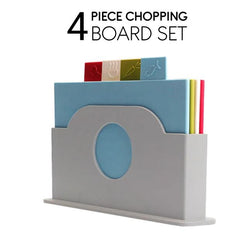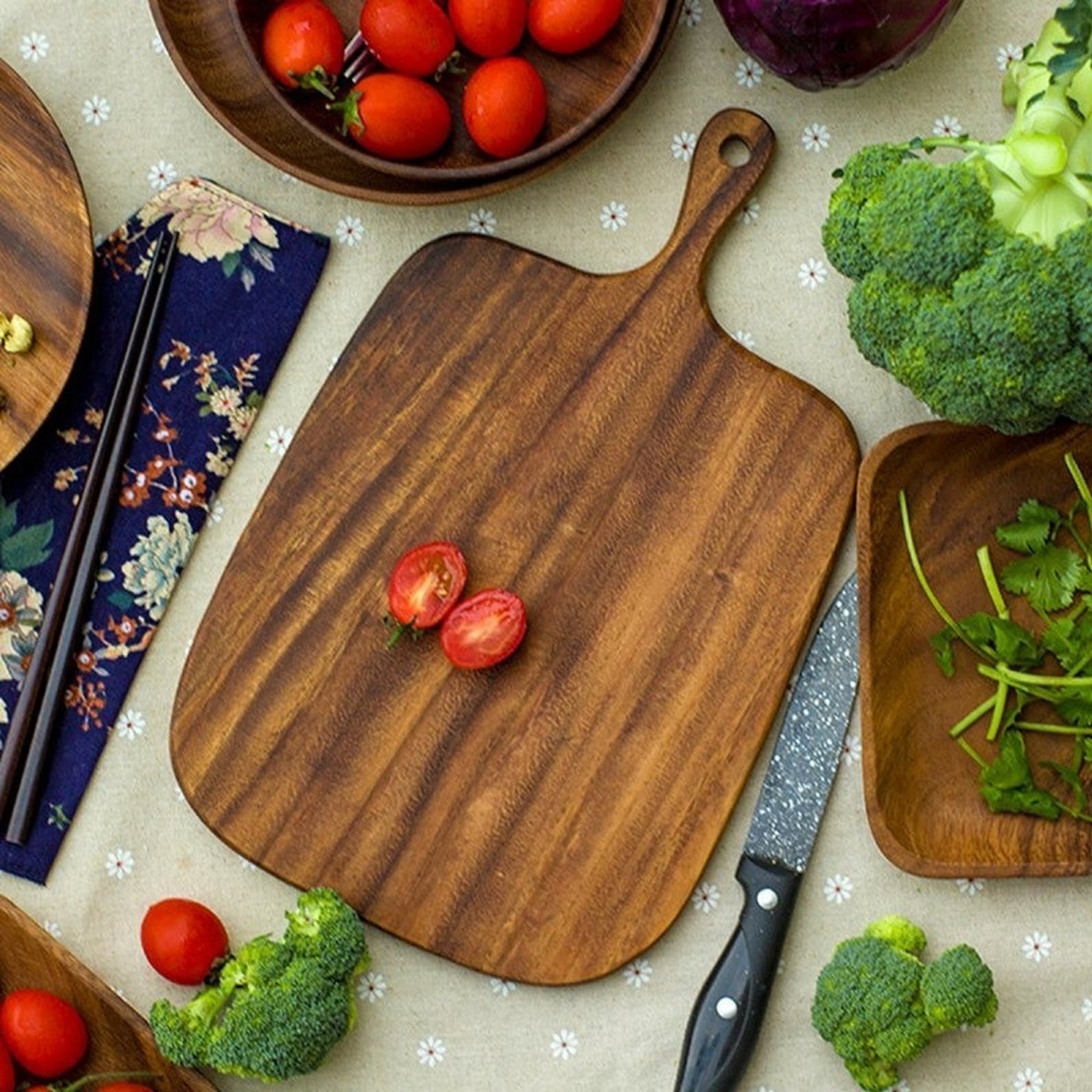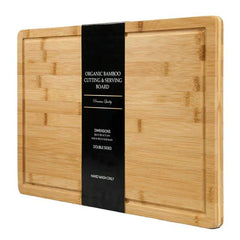Cutting boards are necessary for every kitchen since they provide a sturdy, secure surface for preparing meals. The improper cutting board, however, may lead to substandard meals, harmed knives, and even foodborne disease since not all cutting boards are made equally.
Bamboo Wood Kitchen Cutting BoardSpecifications:
|
|
 |
Thick Plastic Coloured Kitchen Chopping Board 4 Piece SetSpecifications:
|
It's critical to choose the ideal cutting board for your requirements. Some materials are more sanitary than others and have distinct qualities that suit particular purposes. Cutting boards made of wood, such as bamboo or plastic, are ideal for slicing bread and carving meat, but they might contain germs and need extra upkeep.
You may enhance your culinary abilities and ensure your food is healthy and tasty by knowing the benefits and drawbacks of various cutting board materials and choosing the best one for each activity. We'll cover everything you need to know to chop like a pro in our comprehensive guide to cutting boards, from choosing the suitable material to maintaining your board to prevent cross-contamination.
Cutting Board Types
Cutting boards come in a variety of varieties, each with its own set of advantages and disadvantages. The most typical varieties are listed below:
- Wooden cutting boards: Amateur and professional chefs often use wooden cutting boards. They are strong, kind on blades, and naturally bacteriostatic. They do need more upkeep than other kinds of cutting boards, however.
- Bamboo cutting boards: A sustainable alternative to hardwood cutting boards is bamboo. They have a lovely aesthetic, are lightweight, and are simple to maintain. They are less robust than hardwood cutting boards.
- Plastic cutting boards: Plastic chopping boards are the least expensive choice and come in various hues and patterns. They are dishwasher-safe, light, and simple to clean. However, over time, they could become scraped, and that can allow germs to grow.
- Glass cutting boards: These are simple to clean and non-porous. Additionally, they can tolerate high temperatures and are pretty robust. They may rapidly dull blades. Thus, they are less knife-friendly than other kinds of cutting boards.
- Composite cutting boards: These comprise a combination of resin and wood fibres. They are tough, simple to clean, and knife-friendly. But they may be rather hefty and can need special handling.
Choosing The Right Cutting Board
There are several things to take into account while selecting a cutting board:
- Size: Select a cutting board that is big enough for comfortable chopping and slicing food.
- Material: Before choosing a cutting board, weigh the advantages and disadvantages of each kind.
- Upkeep: Some cutting board varieties need more upkeep than others.
- Safety: Verify the cutting board's stability and ability to stay put while in use.
- Use: Consider the components you will chop and dice since certain tools and materials could be better suited for specific jobs.
Tips For Using Your Cutting Board
Using the proper chopping methods will help you avoid accidents and prolong the life of your wood cutting board. Here are a few pieces of advice:
- Use a sharp knife to avoid slippage and guarantee a clean cut.
- To prevent your chopping board from sliding, place a wet cloth below it.
- Use a meat cleaver for more significant, more challenging pieces.
- Before cutting, divide the ingredients into manageable portions.
Which Cutting Board Is Ideal For You?
- For a wooden cutting board, seek sturdy, long-lasting wood like maple or oak. Avoid softwoods like pine since they are more susceptible to damage, such as scratches over time.
- Bamboo cutting boards are an excellent choice if you want a sustainable solution. They are also simple to maintain and clean.
- Plastic cutting boards are an excellent option if you're on a tight budget or want a simple cutting board to clean and sanitise.
- If you want a cutting board that is non-porous and simple to clean, glass cutting boards are an excellent option.
- If you want a cutting board that is sturdy and knife-friendly, composite cutting boards are an excellent option.
How To Care For Your Cutting Board?
Your cutting board has to be cleaned and maintained correctly to stay in excellent shape. Here are some recommendations for caring for various cutting boards:
- Wooden cutting boards: Wash them in hot, soapy water, then dry them immediately. A diluted bleach solution or a combination of water and white vinegar may be used to sanitise a wooden cutting board. Regularly apply food-grade mineral oil to your hardwood cutting board to avoid warping.
- Bamboo cutting boards: Bamboo cutting boards should be washed in hot, soapy water and dried immediately. Use a moderate bleach solution or a combination of water and white vinegar to sanitise a bamboo cutting board. Cutting boards made of bamboo should not be immersed in water as this might cause them to distort or shatter.
- Plastic cutting boards: You may wash plastic cutting boards in the dishwasher or with hot, soapy water. Use a moderate bleach solution or a combination of water and white vinegar to sanitise a plastic cutting board. When plastic cutting boards are excessively scraped or damaged, replace them.
- Glass cutting boards: You may wash glass cutting boards in the dishwasher or with hot, soapy water. A solution of mild bleach or a combination of water and white vinegar may be used to sanitise a glass cutting board. However, a glass cutting board should be kept since it is readily breakable.
- Composite cutting boards: Cutting boards of composite material should be washed in hot, soapy water and dried immediately. Use a moderate bleach solution or a combination of water and white vinegar to sanitise a composite cutting board.
How To Store A Cutting Board?
Cutting boards may last longer if they are correctly stored. Here are a few pieces of advice:
- Keep your cutting board in a dry, cold location.
- Avoid piling cutting boards on top of one another to prevent warping.
- To maximise space, think about vertically hanging or storing your cutting board.
- Refrain from keeping your cutting board near a heat source or in the sun.
Conclusion
Cross-contamination may be avoided, and your ingredients can be prepared effectively and securely by selecting a suitable cutting board and taking care of it. You may choose a cutting board that suits your requirements and utilise it confidently by considering the abovementioned characteristics.



